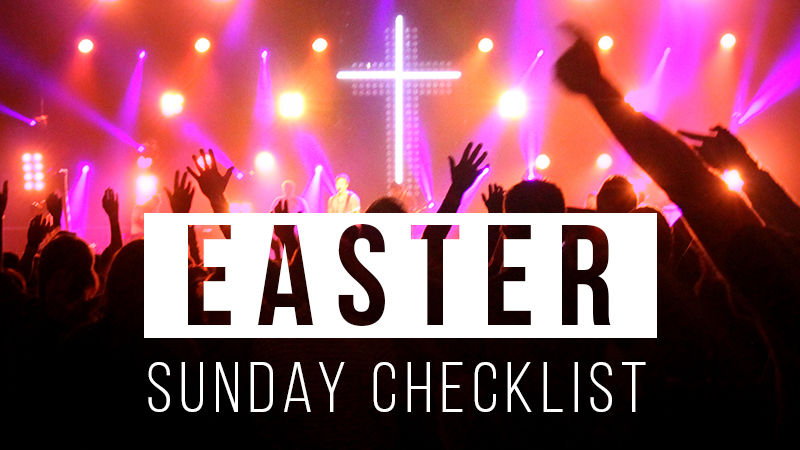It was over twenty-five years I walked into a tent that would revolutionize the way I would forever pastor a congregation. Soon after being called to the First Christian Church of Norwalk California, I began hearing about a church in Orange County that was doing big things. The church was Saddleback Valley Community Church and I decided to attend one of their Saturday night services. At the time they had no building but were meeting in a large tent. I left there after experiencing a celebrative worship experience with a new vision of what a growing church might look like in my surroundings.
I patterned the church I was then pastoring and another I would start some years later after that Purpose Driven Model Rick Warren had developed.
As Easter approaches, I would like to share with you a checklist I have used from Saddleback, about what to do to prepare for guests at Easter and always.
- Include a map of your church on all advertising. A small map can provide clarity, especially if mapping apps can’t locate your church accurately.
- Create a system to give guests the best parking spots. At Saddleback, they have a sign at their property entrance encouraging guests to turn on their headlights if they want a reserved parking spot. Then their parking team directs them to spots near the worship center.
- Make sure you have clear signage. Show people how to find the most important places on your campus, including restrooms, information tables, coffee/snacks, kids ministry, and student ministry.
- Prepare greeters to welcome your guests. The first people your guests see on your campus ought to smile and welcome them warmly. If you already have an established greeter ministry, remind your greeters of the importance of their role on Easter.
- Offer children’s programming simultaneously with each service. Guests generally don’t want to deal with wiggly kids (either theirs or anyone else’s) during the service.
- Ensure your building is sufficiently bright. Most church buildings are too dark. Brighten up your environment and watch your service come to life.
- Set up an info table. Give name badges to these volunteers so your guests know where to go with their questions. Try to anticipate the most common questions guests might have. (Where are the restrooms? Where do I take my child? How do I get into a small group?) It’s also helpful to have basic information available in printed form for guests to take with them to review later. If you already have an info table, make sure it is well stocked and ready to go.
- Allow guests to remain anonymous. Avoid doing anything that makes them stand out.
- Pass out welcome cards or bulletins to everyone. When everyone gets a card, guests aren’t singled out.
- Provide some refreshments. Food relaxes people. Almost everyone loves a donut, but also offer some healthy (or semi-healthy) options. If you can’t get food, at least try to provide coffee.
- Have recorded music playing when people get inside the building. Music puts people at ease. Saddleback says that the louder the background music is, the more animated people are when they talk.
- Begin and/or end your service by asking attendees to greet one another. It’s a great way to help guests feel like they belong.
- Print out a simple order of service. When possible, use straightforward, non-religious terms that people understand even if they’ve never been to church.
- Look for ways to save time during the service. Most of your guests have short attention spans. Have the components of your Easter service written down for your team, with an expected time for each element. Trim that time as much as you can.
- Keep your public prayers short. Unchurched people can’t handle long prayers. Their minds wander.
- Structure your music for IMPACT. At Saddleback they try to follow this flow for their worship music.
- Inspire Movement: An upbeat song that makes you want to clap or stomp your feet.
- Praise: Joyful songs about God.
- Adoration: More meditative, intimate songs sung to God.
- Commitment: A song that gives people an opportunity to affirm or reaffirm a commitment to God (usually in the first person).
- Tie it all together: Another short, upbeat song to end the service.






Add Comment